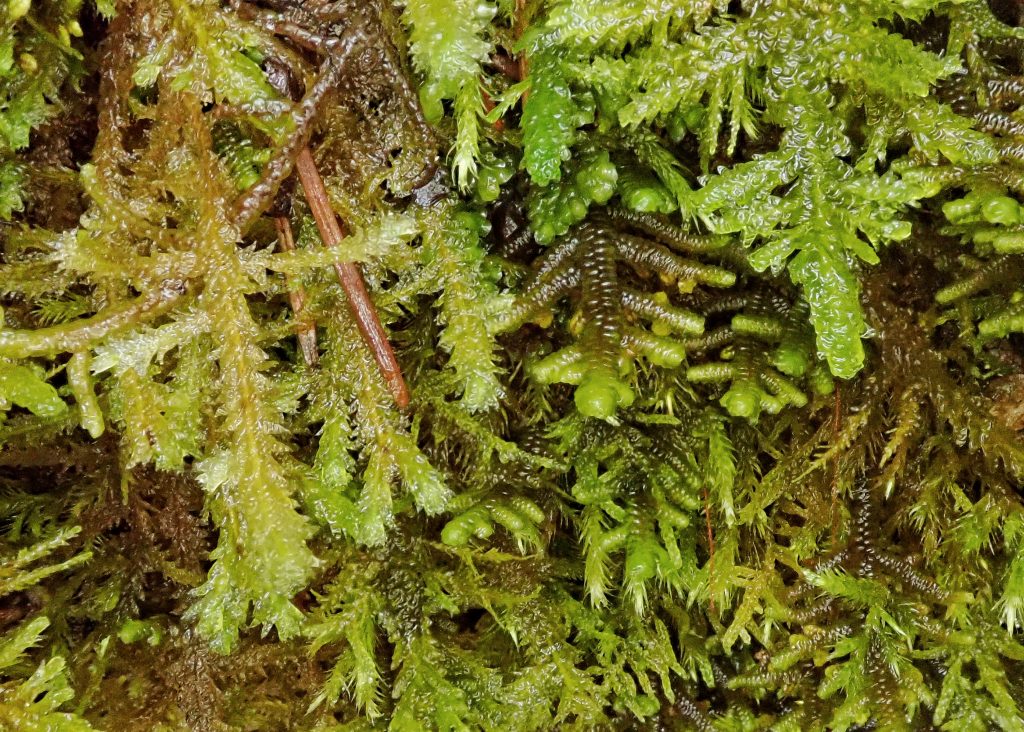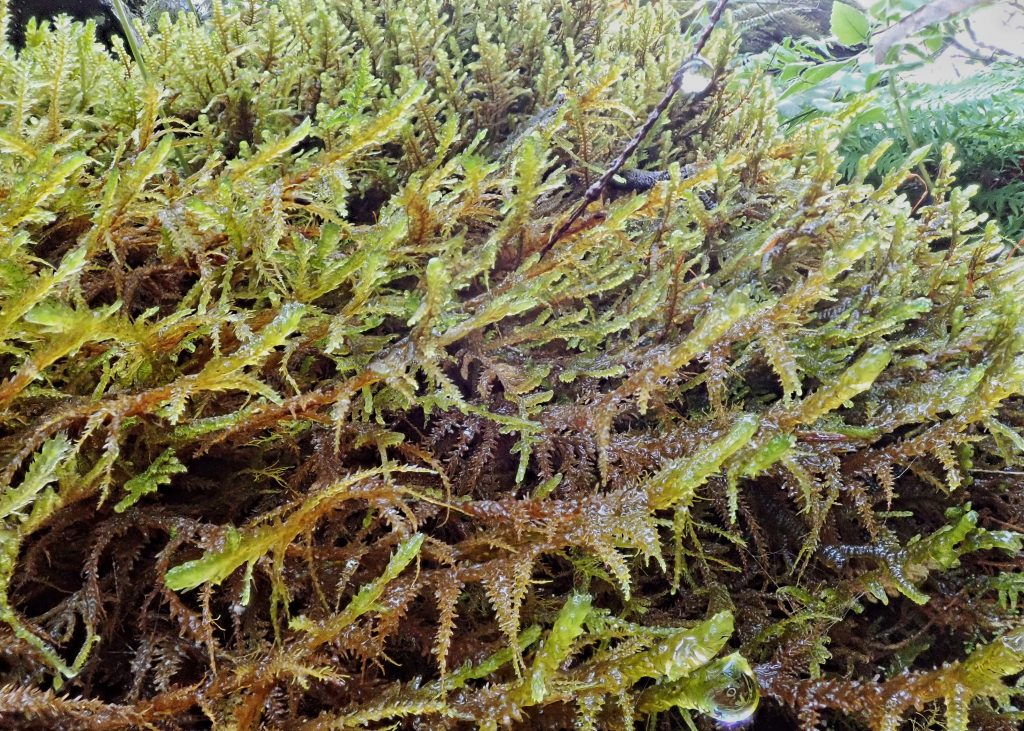
This is a very common forest moss west of the Cascades, and species number 9 for my survey of The Cliff. I found it there on vertical rock, but it is nearly ubiquitous on Big-leaf Maples, where it forms large mats and is often in association with Licorice Fern and the liverwort Porella navicularis, just as it was on The Cliff.
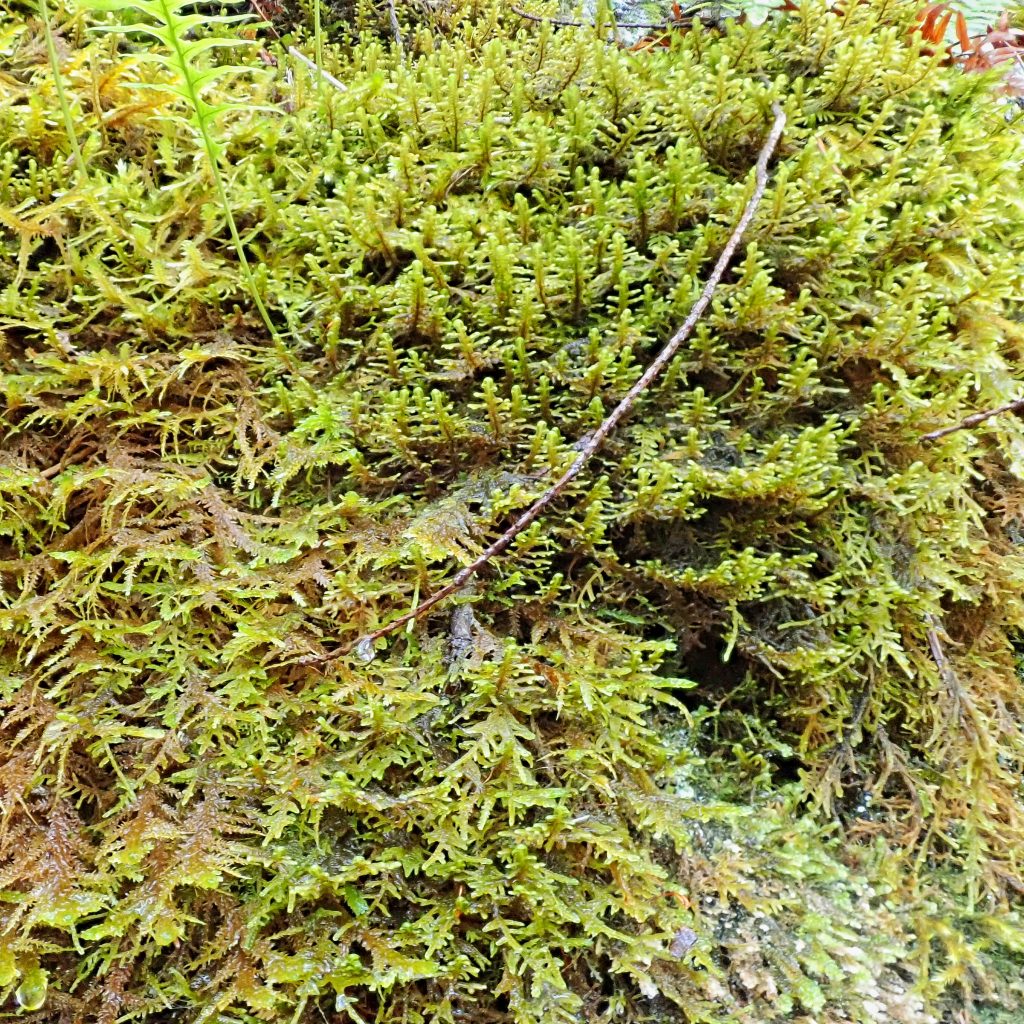
The complanate (forming 2 rows in the same plane) leaves with transverse undulation are noticeable and distinctive, and identify the bearer immediately as Neckera. A hand lens can be used to distinguish it from other Neckera, but McCune/Hutten, in ‘Common Mosses of Western Oregon and Washington’, mention that they can be differentiated by their color, since the older, dying shoots of N. menziesii are rusty brown, while those of N. douglasii are grayish brown. This gives them a rusty or grayish tone, respectively. Unfortunately this is useless to a colorblind naturalist such as myself, so I’ll have to take their word for it.
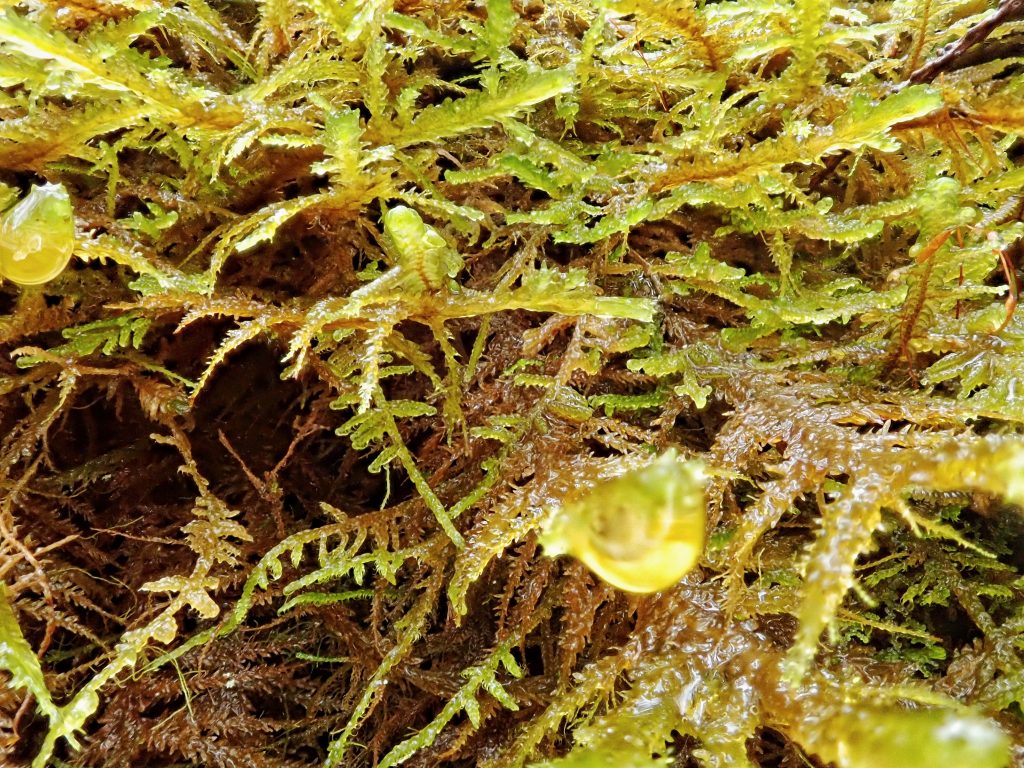
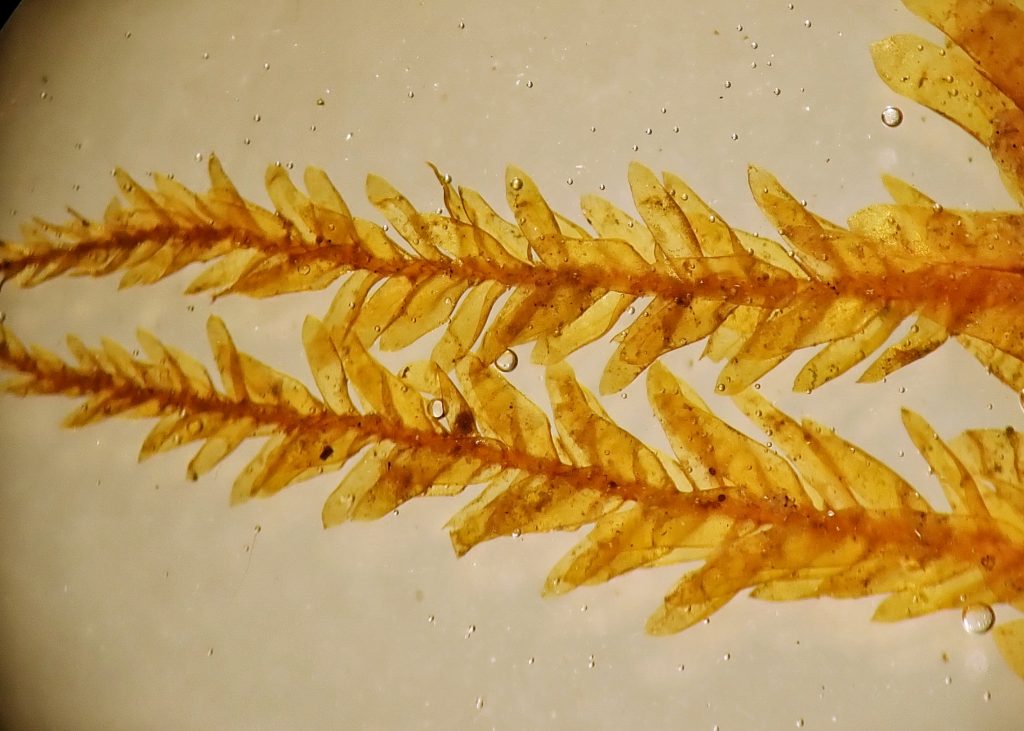
Description– Forms large mats of mostly prostrate plants, although on vertical surfaces they will arch away from the substrate; shoots are long (up to 6”) and branching frequently; leaves are complanate with noticeable transverse undulations, oblong or lingulate (tongue-shaped), rounded at the apex, with a short, finely toothed point; unlike most species in this genus (and the basis for a short stay in its own genus Metaneckera) it has a single costa which reaches 3/4 of the way to the tip of the leaf; it also has abundant paraphyllia (short photosynthesizing filaments), which grow between the leaf bases on the stem.
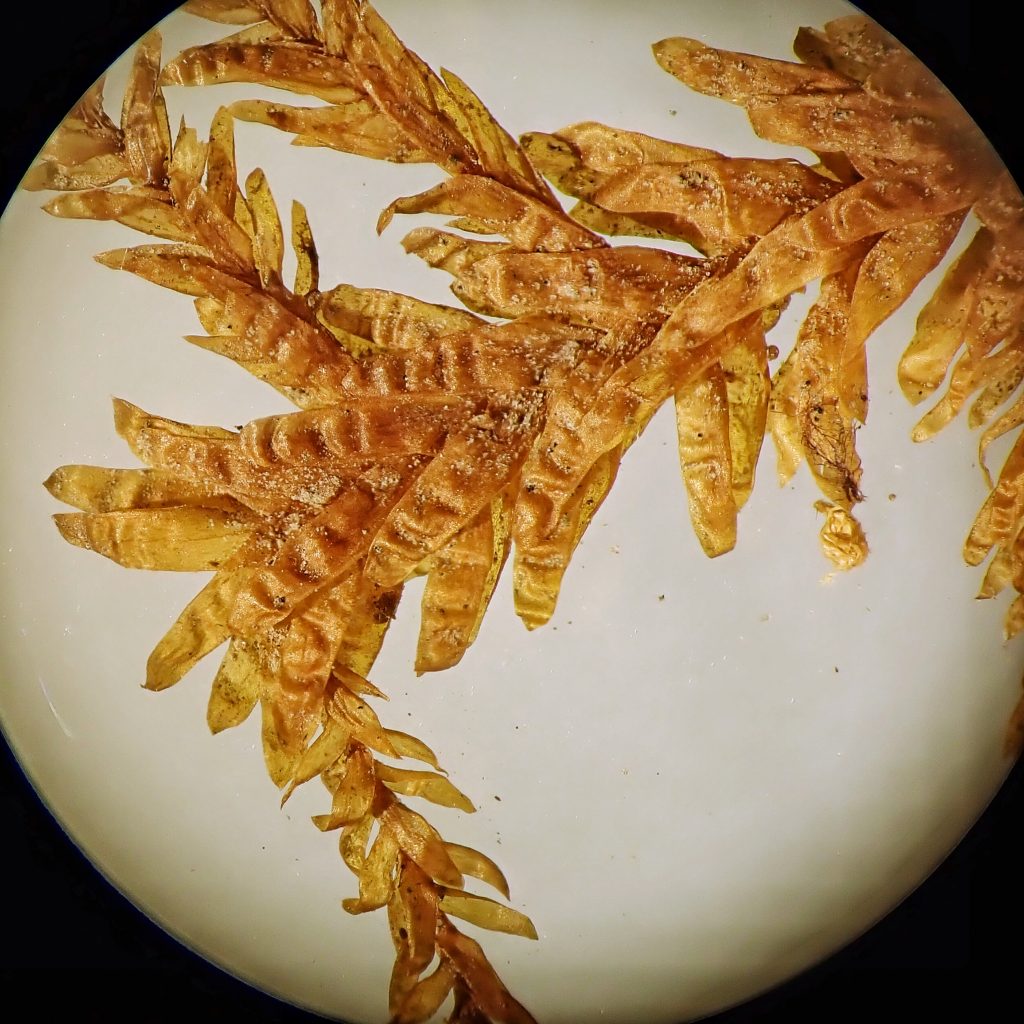
Similar species– Neckera douglasii lacks paraphyllia, has a short, doubled costa, and narrower leaves, which taper gradually to a point, and are heavily toothed at the apex; N. pennata lacks paraphyllia, has a short double costa or no costa at all, and has more gradually tapering leaves; no other complanate species have transverly undulate leaves.
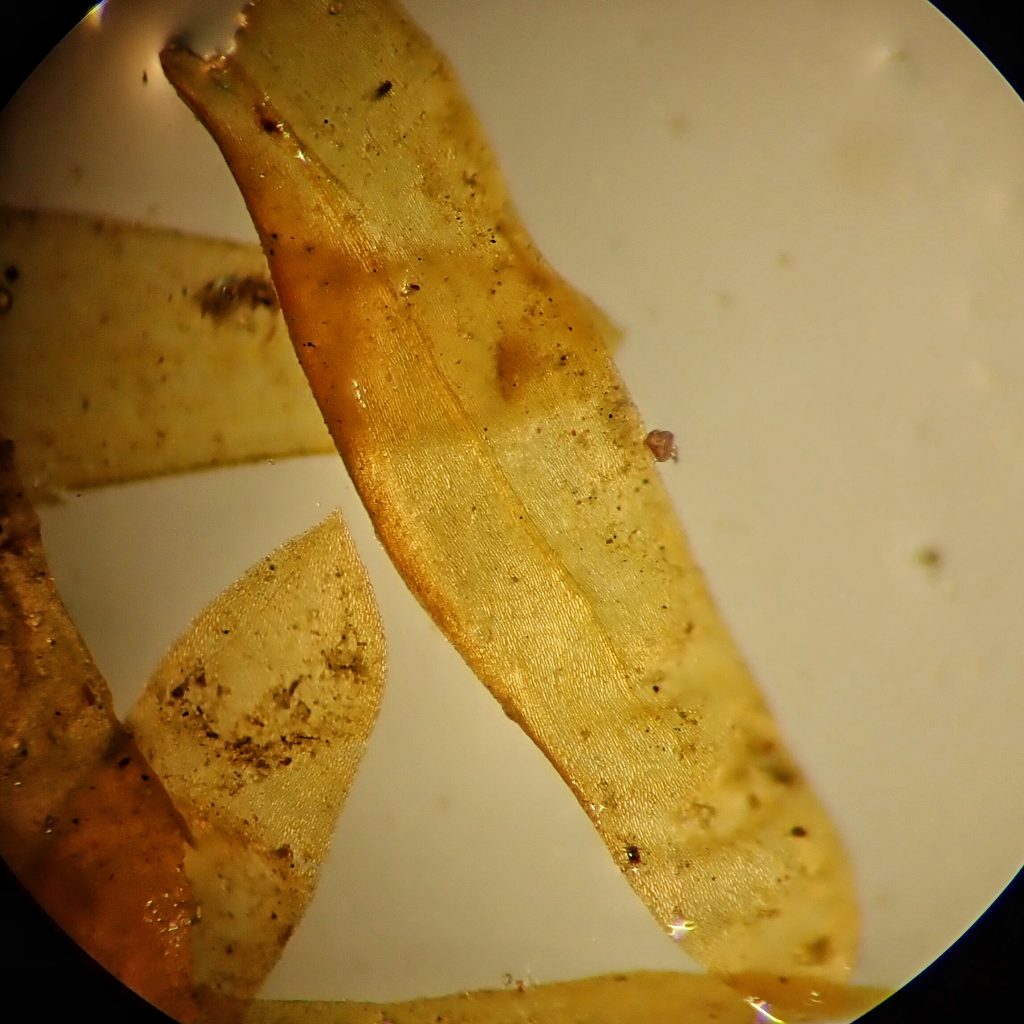
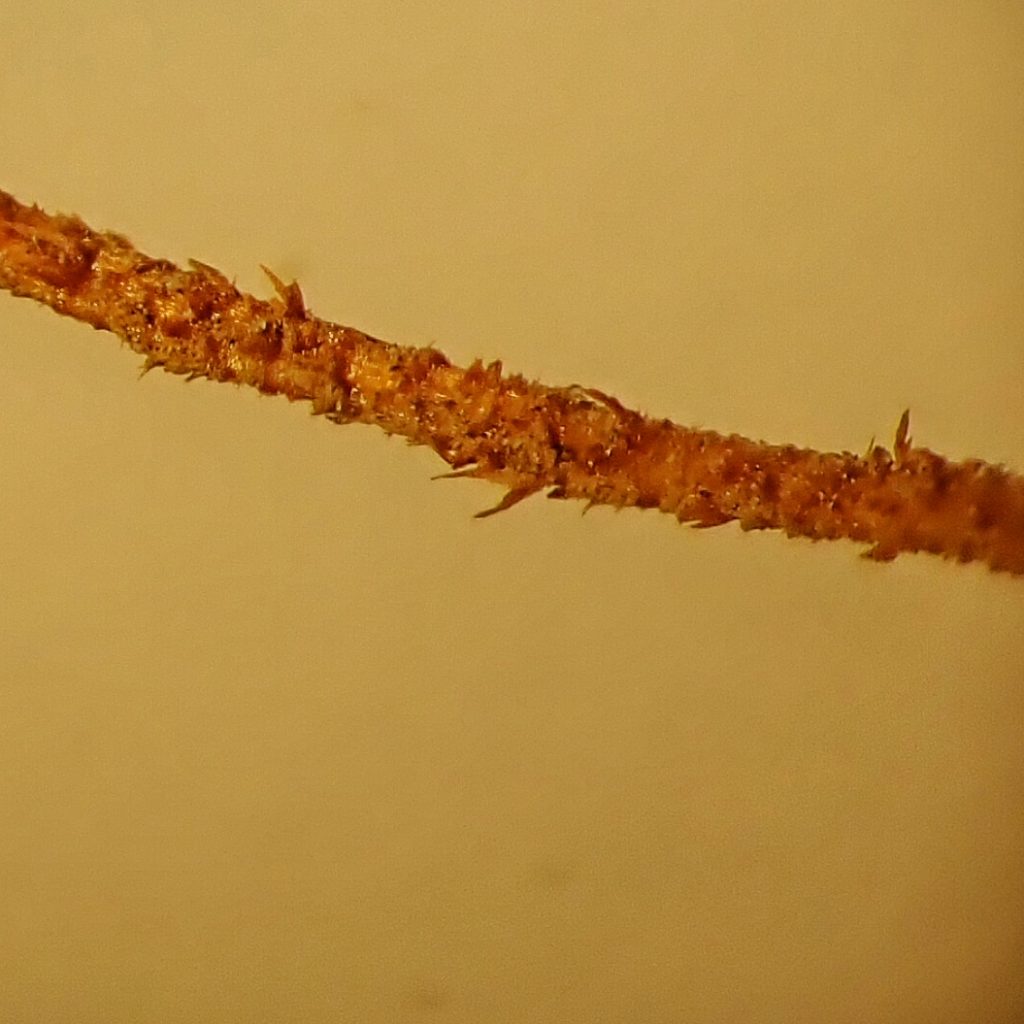
Habitat– Mesic forests up to 6000’, where it grows on hardwood and conifer trees, logs and vertical rock.
Range-Region wide in appropriate habitat
Etymology of names– The genus is named for Noel Martin Joseph de Necker, 1730-1793, a French physician and botanist, who was influential in the early study of mosses and fungi. The species is named for Archibald Menzies, a Sottish surgeon, naturalist and explorer.
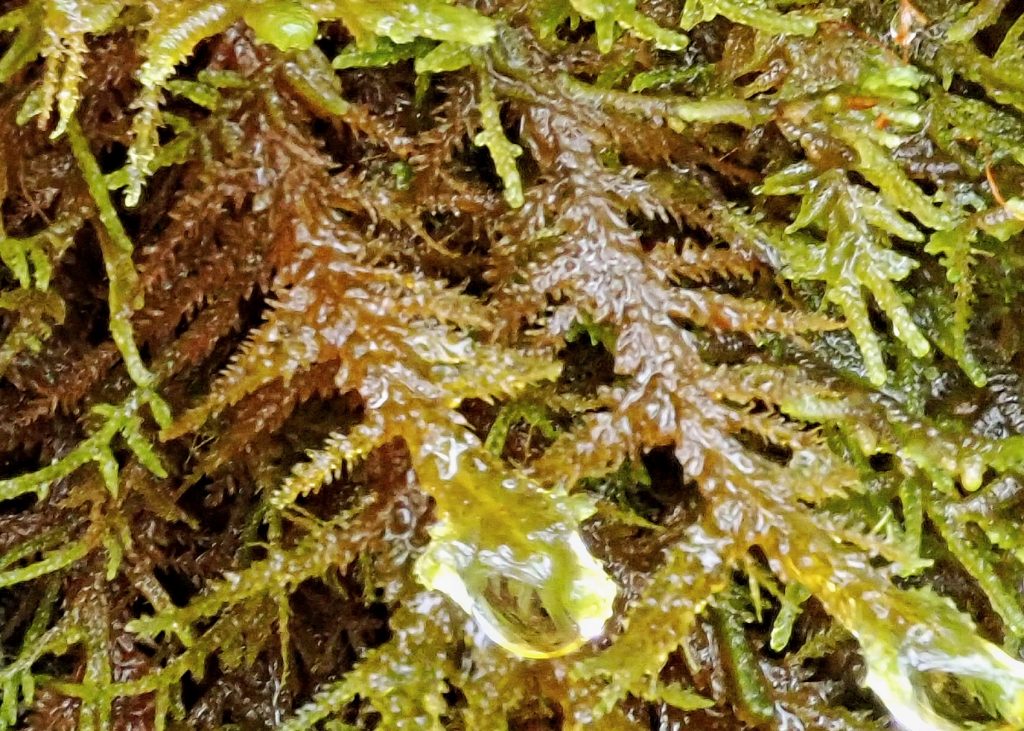
http://www.efloras.org/florataxon.aspx?flora_id=1&taxon_id=250099223
https://wnmu.edu/academic/nspages/gilaflora/neckera_menziesii.html
http://fieldguide.mt.gov/speciesDetail.aspx?elcode=NBMUS4M010
